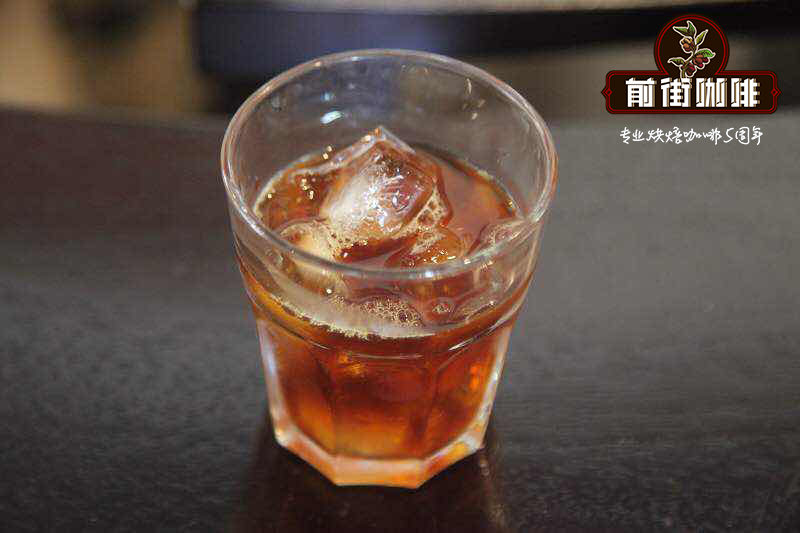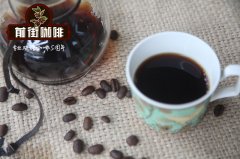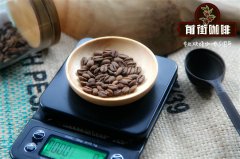Cuban coffee presentation? What is Cuban Coffee? Cuban coffee history?

Professional coffee knowledge exchange more coffee bean information please follow the coffee workshop (Wechat official account cafe_style)
Cuba's clock came to an abrupt end in 1960 when the United States imposed trade sanctions on Cuba. Even 50 years later, people live in brightly colored but dilapidated buildings in Cuba, just 60 miles from the Caribbean coast of southern Florida, in vintage cars painted with all kinds of paint. Cuba is gradually diluted in our impression that we have even forgotten the real cultural symbol of Cuba-coffee. "in Cuba, coffee is more than just a beverage extracted with beans," Adam? "it's an important bond between people," says Adam Goldberg.
Goldenberg is a software engineer from New York, USA, who loves coffee, good food and photography. He set up the A Life Worth Eating website in 2007 to record the food he tasted and the cities he visited. "when I am traveling, the way I know a city is to go to the local cafe to taste coffee. Coffee has become the only standard for me to taste a city." "there are many young people gathered in coffee shops around the world, who love their cities and are full of hope for life," he said. " Last year, Goldberg funded the establishment of a semi-annual issue of "Drift" magazine, which introduces people to the customs and cultural characteristics of major cities in the world through the perspective of coffee.
The workers enjoy coffee before going to work
I've always wanted to visit Havana. " That's what Goldberg wrote in his travels to Cuba. Since September last year, Goldberg has lived in Cuba for a month in order to learn more about local history and culture in order to write a column for Drift magazine. Through his efforts, Goldenberg wants to let the world know about Cuban coffee culture, so as to protect this precious cultural treasure.
A person who drinks coffee in a coffee shop. "they only drink espresso." "A barista needs to operate three four-head coffee machines, which means he needs to make 12 cups of coffee every five minutes," Goldberg said. "
"the old man has been using this mocha pot for 20 years." "the mocha pot is the most commonly used coffee pot in Havana," Goldenberg said. "
In the early 20th century, the number of coffee shops in Havana once exceeded 150, but that number has declined year by year since then, due to a decline in Cuban coffee production and an increase in the proportion of rum and sugar exports. Former Cuban President Fidel Castro unified the coffee industry into state ownership during the 1959 Cuban Revolution and asked the country to increase the cultivation of edible crops. "although coffee production has decreased, consumer demand is on the rise." Fifty years ago, Cuba produced 60, 000 tons of coffee a year, but now that figure has plummeted to 6000 tons. "
Due to declining production, the Cuban government in 1962 rationed 4 ounces of coffee per person per month, resulting in the emergence of alternatives to coffee, such as chickpea coffee. "this is a coffee substitute with a mixture of coffee and roasted chickpea powder so that more people can drink more coffee." Goldenberg said. At the local caf é con ch í charo, the barista made him a cup of hummus coffee with a strong, rough and slightly bitter taste. Because the taste is too bad, the local people are used to adding a lot of sugar to the coffee. Chickpea coffee is very common in local rationing stores. Of course, you can also go to a normal store to buy normal coffee, but given the local people's income of $20 a month, coffee is definitely a luxury for most people. Due to the limited amount of coffee, people in Havana drink coffee from very small cups, and the amount of coffee per cup is very small.
Taking into account the rationing of coffee and the low level of income, Cubans mostly make their own coffee at home. "almost every family has a mocha pot." Goldenberg said. Unable to enjoy the full-bodied espresso in the coffee shop, Cubans try to imitate the taste of espresso with a mocha pot at home. "after making the coffee, Cubans will add a spoonful of brown sugar foam to the coffee instead of the coffee fat on the espresso." Goldenberg said.
The popularity of home-made coffee has nurtured a large number of family-style cafes. For those who can't drink coffee at home or workers, the best choice is to stand outside the window of a family-style cafe. "this kind of family cafe is cheaper." "the price of coffee is usually 1 peso, which is equivalent to 3 cents," Goldberg said. " Regular cafe coffee sells for 1.5 pesos.
"from 7: 00 to 9: 00 every morning, a lot of people come for coffee." He said. Today's Cuban coffee culture was formed after the Cuban Revolution, and to this day, coffee is still a cultural symbol for people to exchange feelings and be proud of. "although resources are limited, every Cuban can't live without coffee, and they always have a way to drink coffee."
Important Notice :
前街咖啡 FrontStreet Coffee has moved to new addredd:
FrontStreet Coffee Address: 315,Donghua East Road,GuangZhou
Tel:020 38364473
- Prev

The difference between the four Coffee producing areas in Panama introduction to Panamanian Coffee Manor Shenqu Manor
Professional coffee knowledge exchange more coffee bean information please follow coffee workshop (Wechat official account cafe_style) Product name: 2017 Panamanian BOP skill washing group 10th Shenqu Manor geisha washing (non-competitive batch) (Panama Volcan Los Cantares Lavado Geisha Washed) Flavor description: flower fragrance sweet and rich citrus lemon fresh vanilla
- Next

Panamanian coffee handbrew recommendation-Jensen Manor Blue Standard washing Rose Summer Coffee Information introduction
Professional coffee knowledge exchange more coffee bean information please follow the coffee workshop (Wechat official account cafe_style) this batch of Jason Manor blue standard washed geisha cup flavor test is as follows: Fragrance: jasmine, berry, citrus, banana, peach, mango wet (Aroma): wild ginger, cantaloupe, lemon, grape, juice, blackcurrant sip
Related
- Detailed explanation of Jadeite planting Land in Panamanian Jadeite Manor introduction to the grading system of Jadeite competitive bidding, Red bid, Green bid and Rose Summer
- Story of Coffee planting in Brenka region of Costa Rica Stonehenge Manor anaerobic heavy honey treatment of flavor mouth
- What's on the barrel of Blue Mountain Coffee beans?
- Can American coffee also pull flowers? How to use hot American style to pull out a good-looking pattern?
- Can you make a cold extract with coffee beans? What is the right proportion for cold-extracted coffee formula?
- Indonesian PWN Gold Mandrine Coffee Origin Features Flavor How to Chong? Mandolin coffee is American.
- A brief introduction to the flavor characteristics of Brazilian yellow bourbon coffee beans
- What is the effect of different water quality on the flavor of cold-extracted coffee? What kind of water is best for brewing coffee?
- Why do you think of Rose Summer whenever you mention Panamanian coffee?
- Introduction to the characteristics of authentic blue mountain coffee bean producing areas? What is the CIB Coffee Authority in Jamaica?

